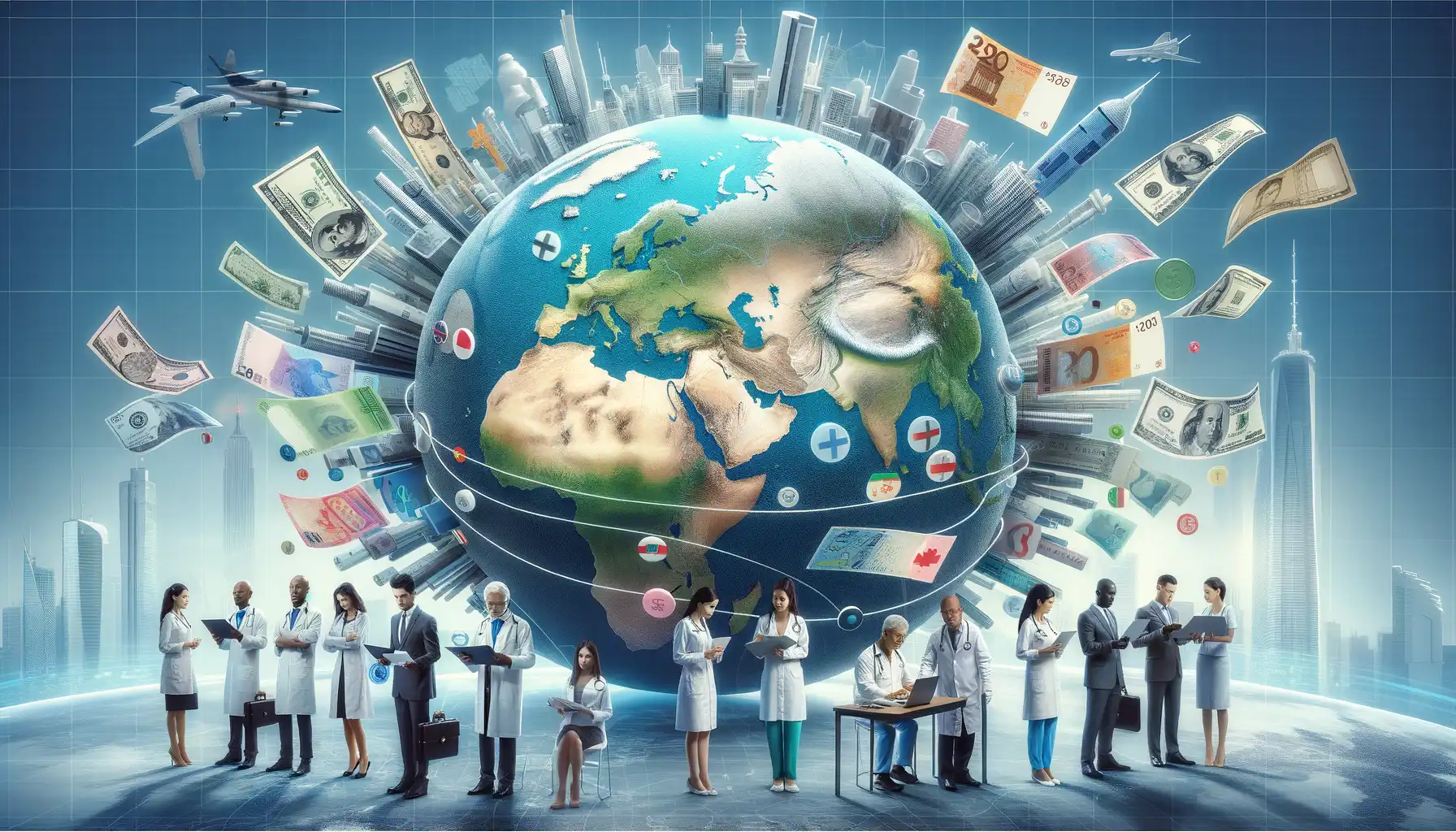Key Funding Sources for Global Health Initiatives
Big Players: Governments and International Organizations
When it comes to funding global health initiatives, the world’s biggest contributors are often countries themselves. Think of governments as the engine behind the wheel—steady, powerful, and necessary to keep the vehicle moving. High-income nations like the United States, Germany, and Japan frequently pledge billions toward health programs targeting diseases like HIV/AIDS, malaria, and tuberculosis. These funds are often channeled through trusted international organizations, such as the World Health Organization (WHO) or the Global Fund to Fight AIDS, Tuberculosis, and Malaria.
But it’s not just about cash flow—it’s about collaboration. Look no further than initiatives like GAVI, the Vaccine Alliance, which pairs government dollars with expertise and support from multilaterals to revolutionize immunization in underserved communities. When donor nations step up to the plate and partner creatively, magical things happen.
Private Sector: The Unlikely Heroes
Now, let’s talk surprises. Did you know some of the world’s most impactful health initiatives trace their funding to the private sector? Yes, corporations and philanthropies aren’t just about profit—they’re writing game-changing checks. Some noteworthy contributions have come from:
- The Bill & Melinda Gates Foundation: With over $50 billion in grants since its inception, this powerhouse foundation has reshaped global health priorities.
- Pharmaceutical Giants: Companies like Pfizer and Johnson & Johnson provide not just money but life-saving medications at reduced costs.
These players may not wear a cape, but their influence is undeniable. Their agility means they can target emerging crises far faster than sprawling bureaucracies—just look at how they stepped up during the COVID-19 pandemic. While governments provide structure, private funders inject speed, passion, and creativity into the mix.
Impact of Global Health Initiatives on Health Systems

Transforming Local Healthcare: The Ripple Effect
Global health initiatives are like a stone dropped into a still pond—they create ripples, touching communities in profound and sometimes surprising ways. These programs don’t just channel funds; they spark transformations within health systems that can last for generations.
Take the example of the push to combat HIV/AIDS. Thanks to major players like The Global Fund and PEPFAR, many low-income nations have seen lifelines extended to those once overlooked. But it doesn’t stop there. These efforts often bring a cascade of upgrades: clinics are modernized, diagnostic tools become more advanced, and healthcare workers receive training that benefits patients with all kinds of conditions—not just the targeted disease.
- Child vaccination campaigns: They often lead to permanent cold chain infrastructure for transporting medicines.
- Tuberculosis funding: It equips labs that later help detect other infectious diseases.
What’s more, by treating diseases as global threats, these initiatives encourage governments to prioritize healthcare spending and accountability. Suddenly, life-saving medication doesn’t feel out of reach, even in resource-scarce areas. It’s an ongoing revolution—but one built step by step, patient by patient.
Strengthening the Foundations of Care
Here’s the hidden beauty: these global programs often uplift entire health systems in their wake. For example, when malaria control efforts bring insecticide-treated nets to rural villages, they also bolster local supply chains. Families experience not just better health—but newfound trust in their local health services.
Even human resources see a shift. Programs aimed at tackling specific diseases frequently train armies of community health workers. And guess what? These skilled individuals stick around, addressing broader medical needs long after the targeted program ends.
It all boils down to this: global health initiatives don’t simply treat symptoms—they rebuild healthcare ecosystems from the ground up. And in doing so, they leave behind legacies that are as inspiring as they are essential.
Challenges in Financing and Sustainability

The Tug-of-War Between Resources and Needs
Imagine trying to patch a sinking ship with duct tape—it’s an impossible balancing act, and that’s precisely how many global health initiatives feel when grappling with financing challenges. Health crises don’t wait for budgets to align or donors to swoop in; they demand action now. Yet often, funds arrive late, fall short, or come with strings attached.
One major hurdle is the inconsistency of funding. For instance:
- Some donors prioritize flashy, short-term results over slow yet transformative improvements in healthcare systems.
- Others attach stipulations, limiting how funds can be used, leaving critical needs unmet.
Picture a rural clinic that has enough resources to vaccinate a child but not to monitor their long-term health. It’s heartbreaking, right? But this is an everyday reality.
When Sustainability Loses Out to Urgency
Here’s the harsh truth: many initiatives are designed for quick impact rather than long-term sustainability. Programs fizzle out when funding dries up, leaving communities stranded without support. For example, think of a malaria prevention campaign that distributes treated bed nets. Without continuous investment to replace worn-out nets or educate families on usage, the disease bounces back, undoing years of progress.
And let’s not forget about the unpredictability of economic landscapes. A sudden recession or shifting donor priorities can shrink already limited funds overnight. The result? Fragile healthcare systems crumble under pressure. Avoiding this requires not just creativity but an iron-clad commitment to planning ahead—and that’s easier said than done.
Innovative Approaches to Improve Funding

Rethinking How We Generate Resources
Money makes the world go round—but when it comes to global health, traditional funding streams can feel like trying to fill a swimming pool with a leaky bucket. That’s where bold, boundary-pushing ideas come into play.
Let’s talk crowdfunding for health initiatives. Imagine millions of people around the globe chipping in just $1 each. Yes, it sounds like pie in the sky, but platforms like GoFundMe and GlobalGiving have already made this a reality. A single, viral campaign has the power to pay for life-saving vaccines or deliver healthcare to communities off the beaten path.
And why stop at individuals? Some savvy organizations are teaming up with the private sector, creating win-win partnerships. For example:
- Multinational companies could round up customers’ purchases to support their chosen health cause.
- Exclusive branded events—imagine a marathon where every step funds HIV research!
By thinking outside the box and ditching outdated fundraising models, these solutions bring the excitement (and dollars) that global health so desperately needs. It’s innovation, amplified.
Unlocking Tech-Driven Opportunities
Technology isn’t just for selfies and cat videos; it’s revolutionizing health financing, too. Blockchain, for example, ensures transparency down to the penny. Funds meant for mosquito nets in Kenya won’t end up lost in administrative limbo.
Even mobile payment systems like M-Pesa are flipping the script. Picture this: a rural farmer in Tanzania using her phone—not only to pay for medicines but to donate a tiny fraction toward building a local clinic. Technology turns donors into participants, investors, and changemakers.
Why settle for ordinary when extraordinary is just an idea away?
Future Directions in Global Health Financing

Pioneering Funding Models for a Healthier Tomorrow
Picture this: a world where no child dies from preventable diseases, where every family can access lifesaving treatments without facing financial ruin. Sounds ambitious? It is. But bold visions demand equally bold solutions—especially in how we fund global health.
The traditional playbook of aid and donations is shifting. Enter new players like impact investors and public-private partnerships, bringing fresh energy to the table. These partnerships don’t just write checks; they support initiatives that are profitable and sustainable. For instance, companies funding vaccine manufacturing in emerging economies create local jobs while saving lives. It’s win-win on a global scale.
- Blended finance: Combining grants with loans or equity to stretch every dollar further.
- Health bonds: Investors receive returns based on measurable health outcomes, like reduced disease rates.
- Digital tools: AI platforms directing funds to where they’re most needed in real time.
The Role of Communities and Local Champions
What often gets overlooked in this grand pursuit? The power of communities. Imagine villagers pooling funds through micro-insurance schemes or local leaders rallying resources for maternal care clinics. These grassroots financiers are proving that “small but mighty” isn’t just a catchphrase—it’s a strategy.
Now, sprinkle in technology: mobile banking apps allowing families to contribute to health funds, or blockchain systems ensuring transparency in donations. Suddenly, financing global health feels less like an uphill battle and more like a collective revolution.
This isn’t just about money—this is about reimagining what’s possible when diverse voices join forces.
